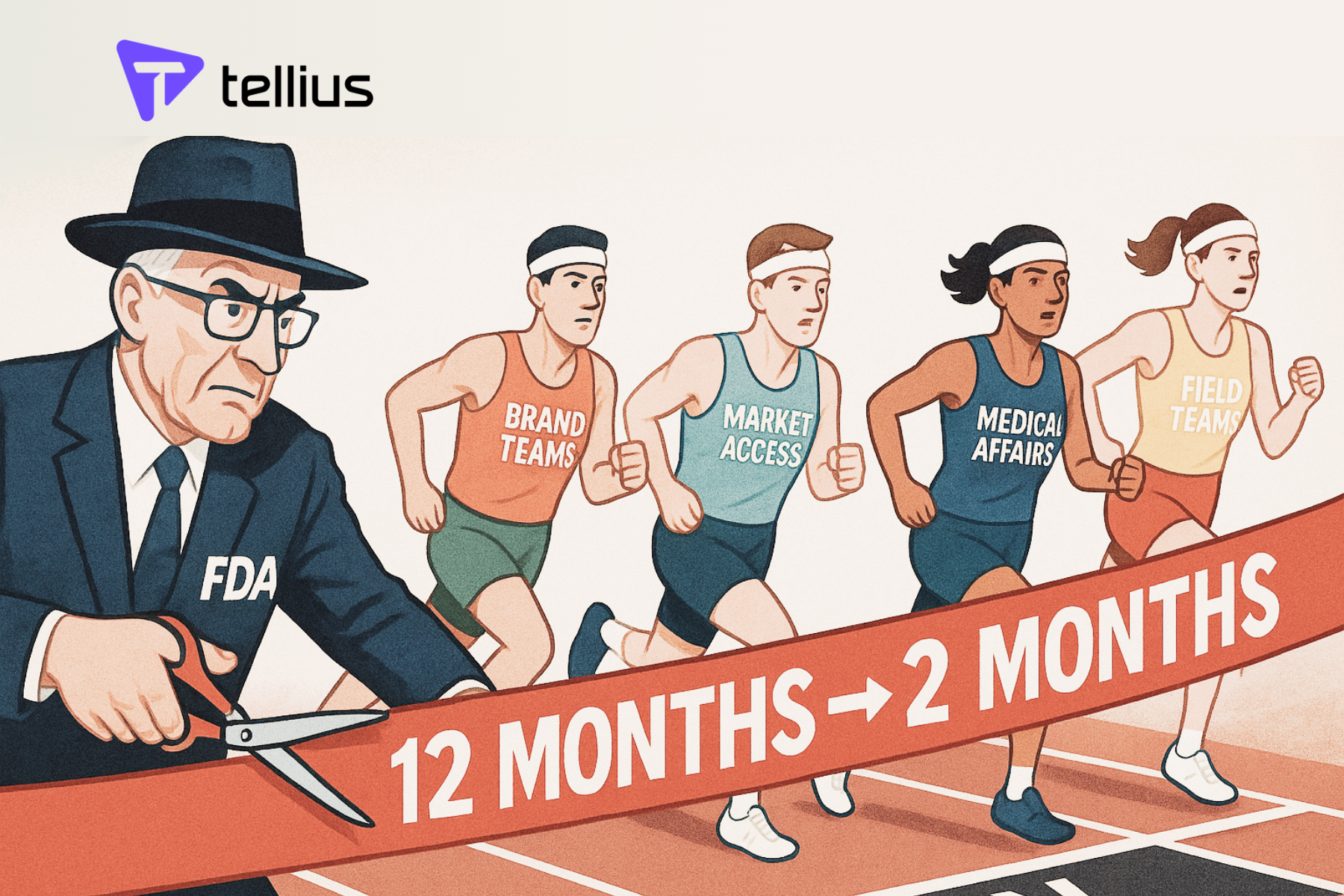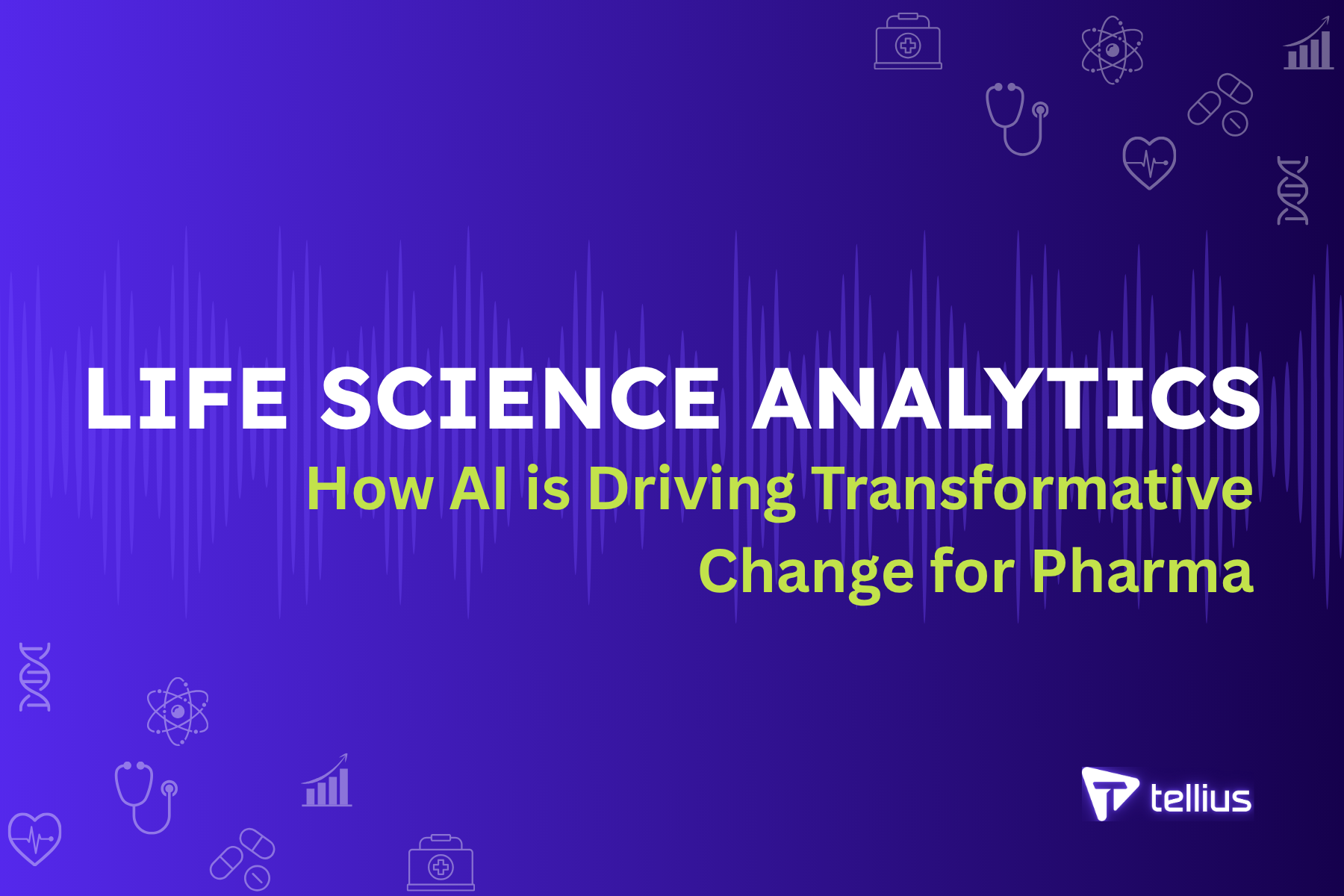Lessons from Pharma’s Biggest Deals: 5 Market Access Tradeoffs AI Analytics Can Help Model & Improve

GLP‑1s, Big Bets, and the New Rules of Market Access
Wegovy. Zepbound. Two breakthrough GLP‑1 therapies. One massive commercial battleground—and a playbook for every pharma launch to follow.
As demand for GLP‑1s like Wegovy surged to unprecedented levels, even the most seasoned commercial teams faced new challenges. Payer coverage was fragmented. Prior authorization criteria varied by plan. Supply needed to ramp—fast. And an unexpected competitor emerged: compounded semaglutide from unregulated telehealth and pharmacy channels, often sold at a fraction of the branded price.
Top manufacturers, including Novo Nordisk, had to act quickly—not just to protect share, but to protect patients. Novo scaled production, partnered with regulators, and invested in affordability programs and access expansion. Others followed suit with their own direct-to-consumer pathways and price guarantees. But the core challenge remains for every brand, in every therapeutic area:
In today’s market, access decisions no longer live on spreadsheets. They shape brand reputation, revenue trajectory, and patient safety—in real time.
The launch environment has changed:
- You can’t price without understanding payer elasticity
- You can’t win access without modeling pull-through at the HCP level
- You can’t scale without coordinating coverage, supply, and affordability
- And you can’t wait weeks to detect when something’s off
Every brand is now navigating strategic tradeoffs under pressure. The winners? They’re the ones who can model, monitor, and adapt faster than the market shifts.
The High Stakes of Market Access Deals
GLP‑1s aren’t an anomaly. They’re a preview.
Nearly every high-profile launch in the last decade—oncology, immunology, rare disease—has encountered similar friction: clinical success meets real-world resistance.
- Orkambi cleared regulators, but was locked out of the NHS for years due to pricing standoffs
- Sovaldi cured Hep C—but its $84k price point triggered payer rationing and a federal inquiry
- Zolgensma succeeded only after Novartis backed its $2.1M price with outcomes-based guarantees
- In obesity, compounded alternatives exploded while payer coverage lagged—forcing branded manufacturers to step in with affordability programs, policy engagement, and direct response strategies
The pattern is clear:
The greatest threat to launch performance isn’t your competitor. It’s misreading the tradeoffs in access strategy—and moving too slowly when the market moves around you.
How AI Analytics Enables Smarter, Faster Decisions
Access strategy isn’t a dashboard problem. It’s a decision problem.
Most teams know what happened. Fewer can say why. Even fewer can model what to do next—before QBRs, brand reviews, or payer escalations.
That’s where AI analytics creates separation.
Today’s best analytics platforms are giving pharma teams the power to:
- Simulate contracting tradeoffs before the deal is signed
- Detect signals of payer drift, formulary changes, or patient defection early
- Surface root causes behind performance changes (plan-level, HCP-level, access-level)
- Track the ripple effects of affordability programs, cash-pay offers, or supply shifts
- Unite brand, access, field, payer, and analytics teams around a single view of performance—without bottlenecks or translation gaps
With AI, brand leaders don’t wait for dashboards. They ask:
“Why is TRx flat in this plan despite new coverage?”
“What happens if we increase our rebate by 10%?”
“Which patients are diverting to compounded alternatives?”
And they get an answer—instantly.
Tradeoff 1: Volume vs. Margin
How do you deepen access without cannibalizing your bottom line?
Rebates are now table stakes. But giving too much away to win preferred access—without modeling its downstream effect—can quietly undermine profitability.
Implications:
- Market Access Lead
You need to justify rebate levels with real data.
→ AI simulates ROI curves by plan, tracks post-deal TRx vs. forecast, and surfaces early contract underperformance. - Brand & Commercial Strategy Lead
You need to know if you’re gaining profitable volume—or just shifting business to lower-margin plans.
→ AI connects rebate strategy to net margin, patient acquisition cost, and segment-level profitability. - Field Sales Director
Coverage wins don’t help if reps don’t know which HCPs have access-sensitive opportunity.
→ AI flags prescribers in newly covered plans—by volume, specialty, and conversion likelihood. - Payer Engagement Team
Plans want to see performance. If TRx underdelivers, trust erodes.
→ AI monitors plan-level activity and formulary adherence, giving you leverage to course-correct mid-cycle.
- Analytics CoE
Every function asks a different version of “Did this work?”
→ AI delivers aligned views for brand (growth), finance (margin), field (pull-through), and access (contract delivery).
Tradeoff 2: Speed to Market vs. Operational Readiness
How fast can you scale without breaking trust—or breaking supply?
The GLP‑1 surge revealed a hidden tradeoff: accelerate access too fast, and supply, fulfillment, or education can’t keep up. Patients turned to compounded alternatives. Field teams were caught without answers. Payers got hit with complaints.
Implications:
- Market Access Lead
Unlocking access too early, without fulfillment readiness, puts relationships at risk.
→ AI helps time plan launches to actual inventory and fulfillment data, avoiding backlash from unmet expectations. - Brand & Commercial Strategy Lead
Demand ≠ readiness. You need to know where to throttle, and where to lean in.
→ AI models launch phasing scenarios and predicts access-readiness by region, payer, and provider base. - Field Sales Director
You don’t want reps promoting plans that can’t deliver scripts—or worse, where patients are defecting.
→ AI identifies mismatch zones where supply, messaging, or compounding risk undermines execution. - Payer Engagement Team
Payers don’t want to deal with brand fallout from fulfillment issues.
→ AI flags coverage areas with access complaints or abandonment spikes—so you can proactively defend value.
- Analytics CoE
You’re the connective tissue—but only if you can monitor supply, claims, field, and access in one view. → AI integrates launch performance across data silos so operations stay coordinated—and scalable.
Tradeoff 3: Brand Growth vs. Payer Fatigue
What happens when success triggers restriction?
High growth often comes with unintended consequences. Payers see rising volume. Budgets strain. Coverage tightens.
In GLP‑1s, we saw employer plans question sustainability. PBMs imposed caps. And brands had to pair growth with proof.
Implications:
- Market Access Lead
You can’t push growth without showing how you’ll contain cost or improve outcomes.
→ AI segments payers by rebate tolerance, outcomes focus, and risk-sharing readiness—so deals scale without backlash. - Brand & Commercial Strategy Lead
Not all growth is good growth.
→ AI helps detect payer friction points, plan-level step edits, or increased PA requirements—before they cut into share. - Field Sales Director
Messaging that was valid last month might now be obsolete.
→ AI dynamically updates rep guidance based on plan changes and payer behavior shifts. - Payer Engagement Team
Your job is to sustain trust, not just contracts.
→ AI connects the dots between outcomes, cost savings, and plan satisfaction—fueling better renegotiation leverage.
- Analytics CoE
You need to link policy shifts to performance patterns.
→ AI correlates payer behavior, prescriber response, and patient outcomes at scale—enabling fast, confident pivots.
Tradeoff 4: National Wins vs. Local Execution
How do you make coverage real at the HCP level?
Winning national access is a milestone. But it doesn’t mean much if reps don’t know how to act—or if HCPs don’t trust the process.
This is where many launches stall: formulary wins don’t translate into filled prescriptions.
Implications:
- Market Access Lead
You’re seeing the coverage win—but uptake is flat.
→ AI overlays formulary wins with TRx data to flag underperforming geographies and uncover local friction. - Brand & Commercial Strategy Lead
A national win with inconsistent local pull-through creates blind spots in forecasting and messaging.
→ AI analyzes zip-level coverage, HCP prescribing, and patient access to fine-tune market plans. - Field Sales Director
“It’s covered” isn’t a strategy.
→ AI delivers localized coverage intelligence to reps—so their call plans reflect actual access, not assumptions. - Payer Engagement Team
If plans think coverage isn’t being activated, you lose negotiating power.
→ AI quantifies conversion rates by plan and provider—backing your story with data.
- Analytics CoE
Everyone wants to know: why is this region stalling?
→ AI ties local performance gaps to plan restrictions, pharmacy behavior, or HCP targeting mismatches.
Tradeoff 5: Static Planning vs. Adaptive Execution
What happens when your data is right—but it’s too late?
Every team has the same problem: decisions are made monthly. The market moves daily.
AI analytics is what turns lag into leadership.
Implications:
- Market Access Lead
You need to know when plans drift from agreed terms—or when coverage starts losing effectiveness.
→ AI alerts you to formulary changes, PA tightening, or adjudication issues as they happen. - Brand & Commercial Strategy Lead
You can’t keep adjusting the plan by QBR—you need to know what changed this week.
→ AI supports rapid scenario modeling, plan-specific ROI comparisons, and real-time budget impact forecasting. - Field Sales Director
Reps need to know what to do—without waiting on next month’s data pull.
→ AI enables territory-level next-best-actions that adjust as coverage, HCP behavior, or performance changes. - Payer Engagement Team
You need to show that you’re managing the plan proactively—not reactively.
→ AI lets you report performance trends early, tie outcomes to value, and drive stronger future negotiations.
- Analytics CoE
Everyone wants real-time answers—and they’re looking at you.
→ AI gives every team the power to ask complex, forward-looking questions in natural language—and get accurate, explainable answers in minutes.
Final Thought: You Can’t Avoid Tradeoffs. But You Can Model Them.
Every brand, every access strategy, every payer deal is built on tradeoffs. They’re unavoidable. But they don’t have to be unpredictable.
AI analytics gives market access, commercial, payer, and analytics teams the visibility, coordination, and foresight they need to understand those tradeoffs—and act before it’s too late.
If your team is asking:
- Why are patients going to compounded alternatives?
- Are our rebate deals profitable?
- Why is pull-through lagging despite new coverage?
- Where should we scale up field efforts this quarter?
You shouldn’t be guessing.
You should already know.
Because in this market, the brands that win aren’t the ones with the boldest strategy.
They’re the ones with the clearest visibility—and the fastest, most confident response.
Get release updates delivered straight to your inbox.
No spam—we hate it as much as you do!


What the FDA's New Priority Voucher Program Means for Commercial Pharma Teams

Faster drug approvals are coming. Here's how field sales, market access, and brand teams must adapt—and why AI analytics is no longer optional.

The Guardrails Are Off. What’s Next for CAR-T Access?

With the FDA’s landmark approval of CAR-T therapies like Abecma and Carvykti as earlier-line treatments, the commercial landscape is shifting rapidly. This blog explores the next phase of CAR-T market access and the analytics brand teams need to navigate it. Learn how to forecast pull-through, identify high-opportunity accounts, and guide sales execution using real-world data, segmentation strategies, and AI-powered insights. From payer dynamics to provider referral patterns, find out what it takes to win in a competitive, high-cost therapeutic space.

Life Science Analytics: How AI is Driving Transformative Change for Pharma

Implementing AI-driven analytics is a catalyst for transformative change in the pharmaceutical and life sciences world.

